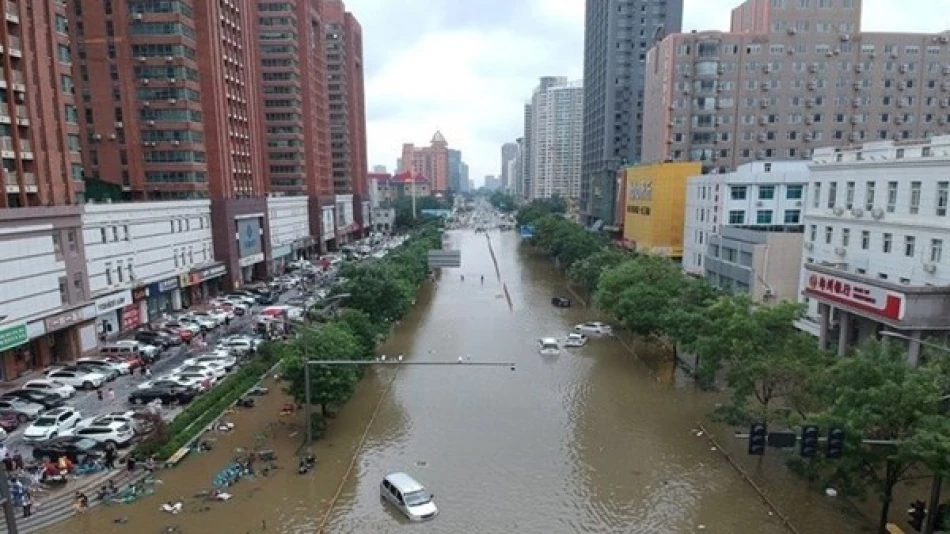
Heavy Rains Claim Two Lives, Trigger Mass Evacuations in Northern China
Climate Crisis Hits China's Capital: Beijing Faces Unprecedented Flooding as Extreme Weather Becomes the New Normal
Northern China is grappling with deadly flooding that has killed at least two people and displaced thousands around Beijing, marking another devastating example of how climate change is transforming the country's traditionally arid northern regions into flood-prone disaster zones. The crisis underscores China's growing vulnerability to extreme weather events that threaten both its densely populated urban centers and critical industrial infrastructure.
Death Toll Rises as Record Rainfall Batters Industrial Heartland
The latest round of torrential rains has proven fatal in Hebei Province, where two people died and two others remain missing according to China's state broadcaster. The industrial city of Baoding bore the brunt of the deluge, with the town of Fuping recording a staggering 145mm of rainfall—equivalent to what the region typically receives in an entire year, and the second such extreme event in recent memory.
Beijing's Mentougou district has been particularly hard hit, with floods and landslides affecting multiple villages. Power grids and communication networks have collapsed in several communities, forcing authorities to evacuate more than 3,000 residents as emergency services struggle to maintain contact with isolated areas.
Government Response Reveals Scale of Crisis
China's Ministry of Water Resources has issued flood warnings across 11 provinces and regions, including Beijing and neighboring Hebei—a response that highlights the national scope of this weather emergency. The warnings specifically target risks from small and medium-sized rivers, as well as dangerous mountain torrents that can develop rapidly in the region's hilly terrain.
Beijing authorities escalated their response on Saturday by issuing geological disaster warnings, anticipating landslides and mudslides as saturated soils become increasingly unstable. This proactive approach reflects lessons learned from previous flooding disasters that caught authorities off-guard.
Climate Change Transforms China's Weather Patterns
The current crisis represents a dramatic shift in northern China's climate profile. Historically characterized by arid conditions and water scarcity, the region has experienced unprecedented rainfall volumes in recent years. Scientists increasingly link this transformation to global warming, which is disrupting traditional weather patterns and creating more volatile precipitation cycles.
This climate evolution poses particular challenges for urban planning in megacities like Beijing, where infrastructure was designed for a drier climate. The repeated flooding of Baoding—receiving a full year's worth of rain in single weather events—exemplifies how quickly these changes are outpacing adaptation efforts.
Economic and Strategic Implications
The flooding strikes at the heart of China's industrial and political centers, potentially disrupting supply chains and economic activity in regions critical to the country's manufacturing base. Hebei Province, which surrounds Beijing, hosts numerous heavy industries and serves as a crucial logistics hub for northern China.
For China's leadership, these recurring disasters present both immediate humanitarian challenges and longer-term questions about infrastructure resilience. The government's substantial investments in flood control and disaster preparedness are being tested by the accelerating pace of extreme weather events, potentially requiring even more dramatic adaptations to protect major population centers.
As climate scientists warn that such extreme weather patterns are likely to intensify, China faces the costly reality of retrofitting urban infrastructure while simultaneously managing immediate disaster response—a challenge that mirrors similar struggles in flood-prone regions worldwide, from European river valleys to American coastal cities.
Most Viewed News

 Layla Al Mansoori
Layla Al Mansoori






